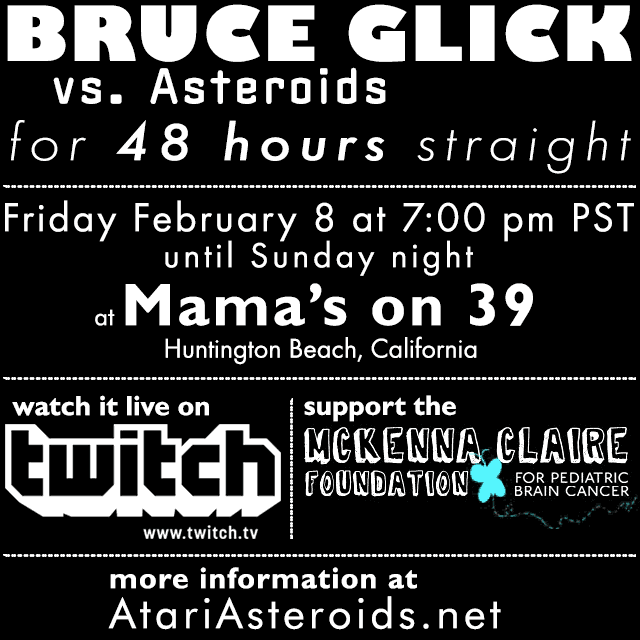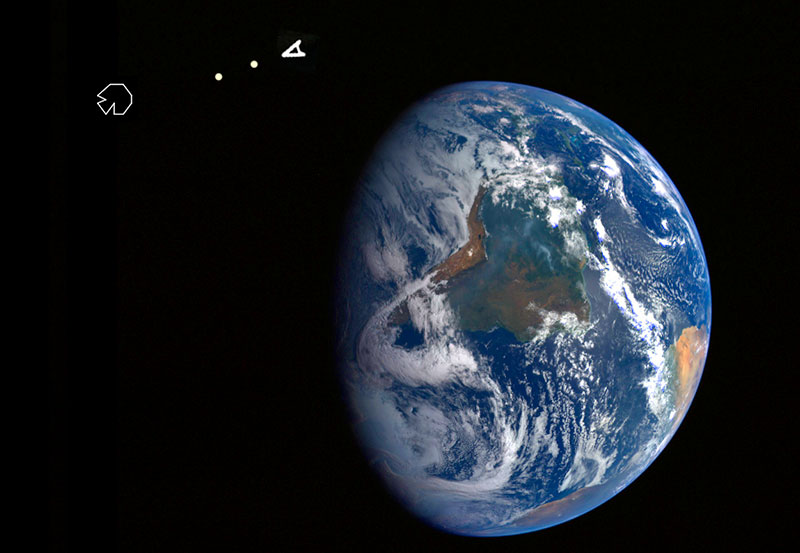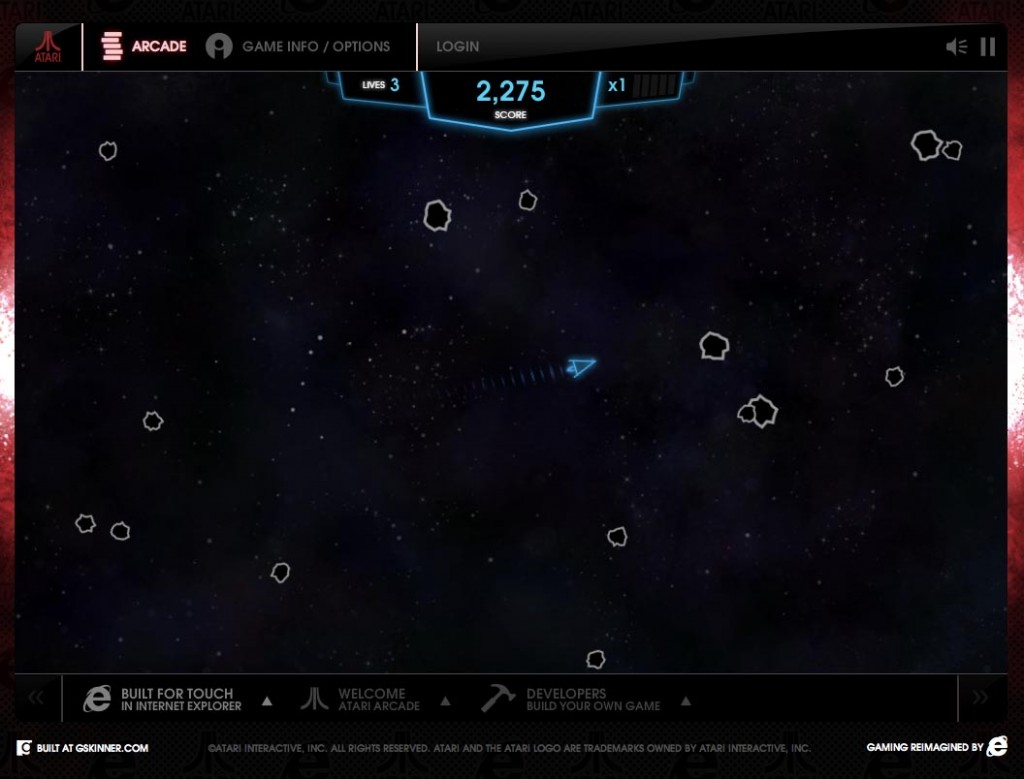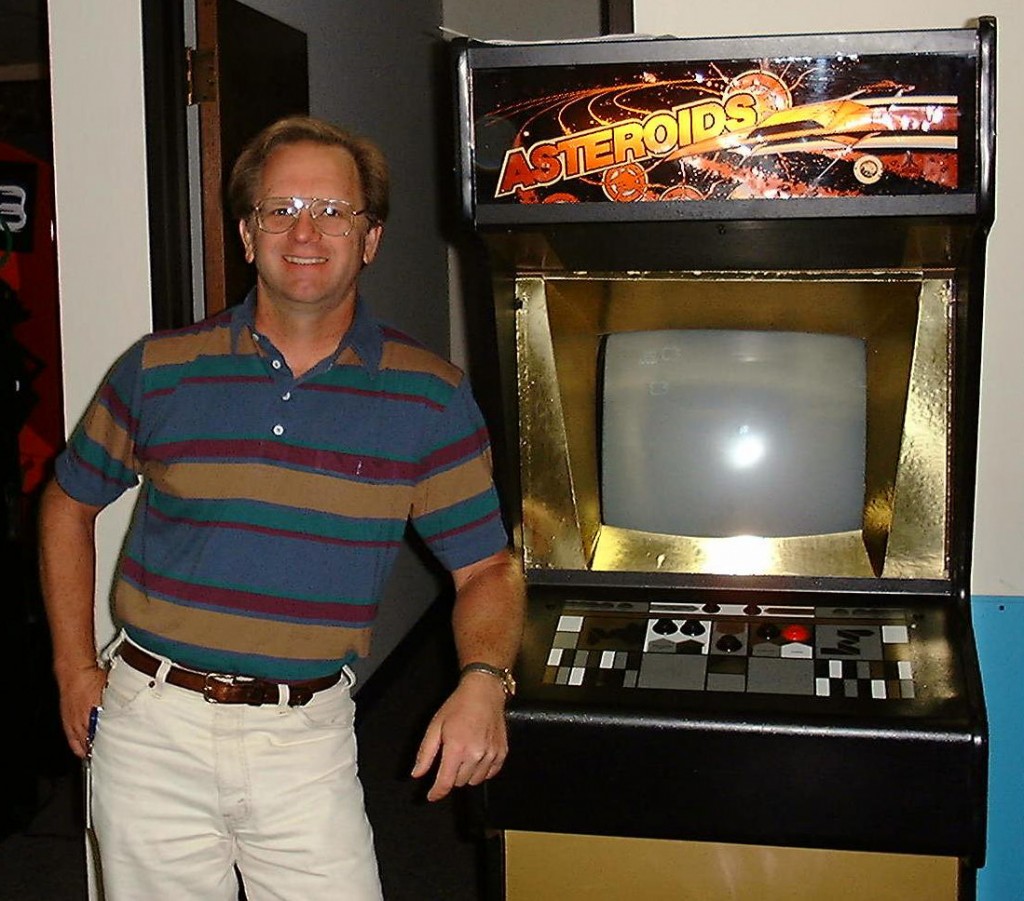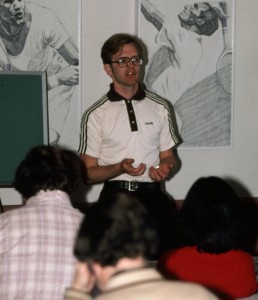Bruce Glick 48-Hours of Asteroids
Posted on February 04, 2013Links:
http://twitch.tv/bruceasteroids
[UPDATE] We’ve gotten word that the on-site Internet connection may be spotty, but check back though out the weekend. Search for Bruce Glick Asteroids on Twitch. We’ll post a direct link once we know it.
[UPDATE 2] The direct link is http://twitch.tv/bruceasteroids.
www.mamason39.com
mckennaclairefoundation.org
Exclusive interview with Bruce Glick before this event
@Bruce_Glick on Twitter
Bruce Glick Prepares for 48-Hours of Asteroids
Posted on January 17, 2013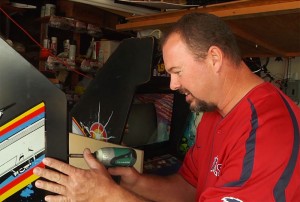 On Friday, February 8, 2013, at 7:00 pm PST, Bruce Glick begins his uninterrupted 48-hour session of Atari Asteroids at Mama’s on 39 in Huntington Beach, California, also streaming live on Twitch.
On Friday, February 8, 2013, at 7:00 pm PST, Bruce Glick begins his uninterrupted 48-hour session of Atari Asteroids at Mama’s on 39 in Huntington Beach, California, also streaming live on Twitch.
Glick is working up to a world-record attempt. He’s got his eye on John McAllister’s 2010 high score of 41,838,740, although beating it won’t be an easy feat. Before that, Asteroids was the longest-standing unbeaten arcade game record, set in 1982 by Scott Safran.
But Glick isn’t just doing this for personal glory. He’s doing it for the kids. We spoke with him to find out more.
Atari Asteroids: How did you first come up with the idea for this marathon session?
Bruce Glick: I guess it was just a natural progression. I needed to do something in a live setting and I want the experience before I make the attempt at the record.
AA: Why is a live setting important?
BG: It’s the way Scott Safran did it back in the day, and that’s how it should be done now. Too many people are doing these exclusively on the internet. Takes the coolness out of it. Plus there’s way more pressure.
AA: Last year, you completed a 36-hour-straight session where you scored 18,000,000. What was that like?
BG: It was awesome! Never attempted anything like this before. All my neighbors and some friends came over at different intervals to watch and cheer me on.
AA: How have you been preparing for this upcoming 48-hour session?
BG: My actual game play is sporadic due to my heavy work load. When I do play it’s more for an hour or two at a time, working on technique and reflex. My real training has come in the form of exercise for physical health. I felt this was extremely important for me. I was definitely overweight and not in the best shape. I am proud to say since October 30th I’ve lost 40 lbs and exercise regularly.
AA: I hear you’ve gotten involved with the McKenna Claire Foundation for this event.
BG: The McKenna Claire Foundation raises money for pediatric brain cancer research. I figured if I’m going to do something that’s going to attract attention and people will be watching, then I might as well make it worth-while. They have made a huge impact in our town, and it’s for a great cause.
I met with Dave and Kristine Wetzel [the foundation’s Co-Founders and McKenna’s parents], and they were nice enough to give my wife and me a jacket with the MCF logo on it. I will be wearing it in the morning during my runs. It is very inspiring to me.
AA: It sounds like kids’ health is very important to you.
BG: Yes, it’s the future of our country. “The Biggest Loser†has really touched on the subject this season. The fact that video games are being blamed for a large portion of the epidemic doesn’t sit well with me. I know it defiantly plays a part in it.
I want to show kids that doing something like a 48-hour marathon actually takes physical training and good health to achieve. Kids shouldn’t spend countless hours gaming. Even when I was a kid and we had our Atari 2600 and our local arcade we still rode bikes, skateboards, built forts. We did stuff.
AA: You have your own Asteroids machine. What other arcade games do you own?
BG: I currently have two Asteroids machines, Gauntlet 2, Galaxian, Missile Command, and a MAME system (Multi Arcade Machine Emulator). It has pretty much every game you can think of plus all the ones you forgot about.
AA: What do you look for in an Asteroids machine, for an event like this?
BG: I just play it and if she’s smooth it’s good. These games are so old they’re either in good condition or they’re not. One thing to consider is the PCB basically the heart of the game. If the PCB looks good no cracks in the solder, no blistering of capacitors or burn spots any where then it’s probably good. It’s really just luck to get one that works well.
The machine that I will be doing my 48-hour on is the biggest piece of crap ever. Seriously it’s embarrassing how messed up it is. The reason I play it is because its internals are nice. It’s basically the Millennium Falcon.
AA: So what can people expect on February 8-10? If they’re in the area, can they stop by Mama’s?
BG: Yes, yes! It’s open to the public — it’s a live forum. I will have all my games down there for people to play so anybody, even McAllister, could roll up and go head to head with me. Mama’s has great service, food, and atmosphere. They have a nice bar and big screens for watching your favorite sporting event. Anybody is welcome to walk up and talk to me. I may not be able to make good eye contact but I will definitely be able to answer any questions anybody has or just talk about whatever.
I don’t know if McAllister has seen your site or knows anything about me, but it sure would be cool if he was in the area that weekend. I would love to meet that guy. He is a legend in the vintage video game world, and if anybody doesn’t know, the current world record holder.
AA: Is there anything else you’d like to add?
BG: Just for the record I’m not looking for personal notoriety. I just want to raise money for the foundation and play my game. It’s really not about me — it’s about everyone else involved. Without all the great people that have been helping me I wouldn’t be answering these questions or doing the 48-hour at Mama’s. Generating interest in vintage games is always cool though.
Links:
Bruce Glick Going for Asteroids World Record
Posted on December 02, 2012 Huntington Beach, CA — Bruce Glick has recently announced his plans for public marathon sessions of Atari Asteroids, with an eye on breaking the world record.
Huntington Beach, CA — Bruce Glick has recently announced his plans for public marathon sessions of Atari Asteroids, with an eye on breaking the world record.
His latest achievement was a live-webcast 36-hour straight session, where he scored 18,000,000. Glick is now gearing up for a 48-hour session, which will be hosted by local restaurant and bar, MAMA’s on 39, as well as being transmitted live online.
Glick owns two Asteroids machines. He’s been fine-tuning his championship machine, which has a high score save kit allowing roll-over at 10,000,000 instead of 100,000 (and obviously saving the high scores), and lightning-fast board.
The current Asteroids world record of 41,838,740 was set by John McAllister in April, 2010. Until then, Scott Safran’s 1982 record of 41,336,440 was the longest-standing video game world record.
Stay tuned to AtariAsteroids.net for all your information about Glick’s plans.
[UPDATE]
The time and place are official! Put February 8th, 9th, and 10th, 2013 on your calendar. Start time will be 7:00 pm on Friday night, and will go for 48 hours until 7:00 pm on Sunday night. You will be able to view it live via web cast on twitchTV.com.
More details coming soon…
Asteroids Movie Gets Another New Writer
Posted on November 16, 2012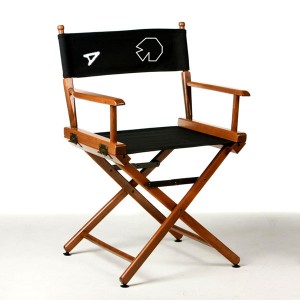 Jez Butterworth has been brought on to rewrite Universal’s film adaptation of Asteroids.
Jez Butterworth has been brought on to rewrite Universal’s film adaptation of Asteroids.
This news comes one year after Evan Spiliotopoulos succeeded Matt Lopez as scribe. Will Butterworth be able to finally boil the game’s complex story down to a screen-worthy script?
Lorenzo di Bonaventura is producing.
Read previous posts about the Asteroids movie here.
Read the recent Variety article here.
[Update] The AV Club has a good write-up here. Harold Pinter was Butterworth’s mentor. If only di Bonaventura decided to make an art film…
Scots Propose Blasting Asteroids to Combat Climate Change
Posted on October 08, 2012The latest in Awesome Actual News Related to Spaceships and Asteroids comes from the Scottish University of Strathclyde’s Advanced Space Concepts Laboratory, where researchers have proposed using asteroid dust to shield our planet from the Sun, reducing solar radiation enough to slow global warming for a bit.
The plan is to push a nearby asteroid — the best candidate being 1036 Ganymed — to Langrange point L1, where the gravitational pull of the sun and the Earth balance each other, and then BLAST THE ASTEROID INTO EARTH-SHIELDING SMITHEREENS.
Now this is what we’re taking about!
What with Scott Manley’s recent HD video of asteroid discovery, AtariAsteroids.net will gladly buy any Scotish astronomer a pint or a dram.
The Atlantic has a good article with more details.
Meanwhile, we’ll be down at Barcade training for when they start hiring on this mission.
Robotic Spaceship Departs Giant Asteroid (Real)
Posted on September 05, 2012It’s been just over a year since NASA’s Dawn spacecraft went into orbit around the giant asteroid Vesta, and today it leaves Vesta for the dwarf planet Ceres. The spacecraft took extensive photos to learn all about the asteroid, but didn’t blow it up. What gives, NASA?
Here’s an official “Farewell, Vesta” video: a fly-over compiled from images taken throughout the year. We asked JPL, and they said they’ll probably release the 3D data to the public once it’s all organized — which could be cool for 3D artists or designers. (Remember, kids, all NASA media is public domain). For more info about the mission, visit the official Dawn site.
Atari Dives Into HTML5 With Microsoft, Offers SDK
Posted on September 03, 2012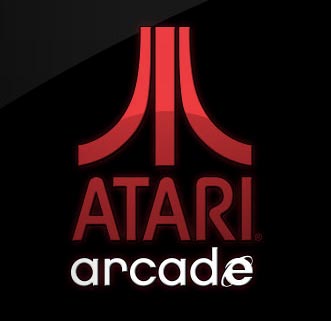 Atari is taking a new direction with its online activities, last week revealing a revamped online arcade and partnership with Microsoft.
Atari is taking a new direction with its online activities, last week revealing a revamped online arcade and partnership with Microsoft.
atari.com/arcade currently offers eight classic titles: Combat, Lunar Lander, Missile Command, Pong, Super Breakout, Yars’ Revenge, Centipede, and of course, Asteroids. The interface is a slick example of what you can do with HTML5 and a multi-touch device, being released as a showcase for Internet Explorer 10 and the Windows 8 Tablet. It works just as well on any other HTM5-capable browser or tablet, but you get ads.
Atari worked with gskinner.com on this project, who re-imagined and re-built the classic titles from scratch, using their CreateJS suite of Javascript libraries and tools. The resulting games vary in design: Pong has a clean arena look, Centipede renders you as a garden gnome defending your turf, and so on.
For Asteroids, they kept close to the original vectorgraphic style: the ship looks the same (although a color), the asteroids are different shapes but the same idea, and the lasers are nice, simple dots. The result is not too bubbly or over-complicated as modern games can be, and yet isn’t trying to make you feel like you’re playing on a lousy old TV. Thumbs-up from us.
The game play is nice and smooth, as is everything on the site. On a computer, you navigate with W-A-S-D or arrow keys, and fire with the spacebar. On a tablet, controls hover over the graphics. The action is basically the same as the arcade, with two differences: you can hold down the fire button to charge up and get more punch out of your laser, and there is no friction. In other versions of Asteroids, you eventually slow down after hitting the thrust button. Here you do not: you have to spin around and reverse-thrust to slow down. This takes a little getting used to, but it’s more like the real experience of shooting asteroids in friction-free space. Clearly based on NASA’s asteroid-shooting training simulators.
The big news with the new Atari Arcade isn’t Asteroids, though — it’s the open invitation to developers. The existing classic games are a showcase, with the idea that anyone can create, distribute, and profit off their own games in the arcade (pending approval). It’s not Facebook (the Asteroids Online app seems to have disappeared). It’s not iTunes (although the latest update of the Atari Classics app is pretty good if you’ve got iOS, and Asteroids Gunner is going strong). Atari Arcade is now creating its own online platform, which can be a go-to game site with the space for user involvement.
Atari has been searching for its identity since becoming active again in the last few years, and this feels like a good fit.
Microsoft has also been developing an increasingly maker-friendly image in recent years, most notably with the whole XBox Kinect story. When the Kinect depth-sensing camera was initially released in November of 2010, open source hardware company Adafruit offered a $1,000 bounty to the first person to create an open source driver. Microsoft said they didn’t condone tampering with their stuff. Adafruit upped the reward to $2,000. Microsoft said, no, really, don’t do that. Adafruit said $3,000, and by that time someone had figured it out. Soon there was an explosion of creative projects in all fields by clever individuals using the Kinect for something other than games. It holds the world record for fastest selling consumer electronics device. Microsoft relaxed its anti-hacker stance (although technically the device wasn’t hacked, in that the USB output is unencrypted, although it all depends on your definition of hacked). And then by June of the next year, Microsoft had come full-circle and released a Software Developer Kit for the Kinect. Microsoft realized that there was a market here, and it earned them major maker cred.
We’ve heard reports of Atari founder Nolan Bushnell-sitings at MakerFaire and various tinker-tech hacker spaces. It seems like a good move to share the fun.
With all this in mind, the Atari Arcade developer page is worth a visit. There is documentation about how they created the games in the arcade, with snippets of code. At GitHub you can download the whole Atari Arcade SDK, including CreateJS and the Atari Arcade Repository.
The classic games are fun to play, but it’s the tip of the iceberg. We look forward to seeing where this goes.
Asteroids’ Ed Logg Honored With 2012 Pioneer Award
Posted on February 07, 2012On Thursday, (Feb 9) the Academy of Interactive Arts & Sciences (AIAS) will present its 2012Â AIAS Pioneer Award to Ed Logg, the man who created Asteroids as we know it.
Some history: In February of 1962, several programmers at MIT created Spacewar!. At the time, it was only available to those few with access to a massive computer, like university students. But nine years later, Nolan Bushnell brought the game’s idea into the arcade with Computer Space, developed at Nutting Associates. He and Ted Dabney took their proceeds from the game and founded Atari, which took off with Pong (1972).
Ed Logg had also played Spacewar! while studying at Stanford’s AI Lab, and followed his interest to Atari’s arcade division by the late 1970’s. His first completed assignment there was Super Breakout in 1978.
He ended up in a brainstorming session with Atari executive Lyle Rains. A follow-up to Computer Space had been shelved long before, due to rights and other issues, but Rains now wanted to resume work on a new spaceship shooting game. This time, instead of shooting another spaceship with an asteroid as incidental debris, the asteroid would be the focus.
Logg suggested using a high-resolution vector display instead of the standard televisions used in other games, which would allow for increased speed and precision. He also introduced greater complexity than Asteroids‘ predecessors. “Computer Space has a pattern,” Logg explains. “You just go through it and you keep running through it.” [1]
Pong had variety in its play, but simplicity in its controls. Computer Space had more complicated controls, but simple play. Logg thought it would be fun to put the two together.
Logg says, “I play a lot of the games in my mind long before I ever write them because you have to get all the interactions down pat before you can start programming.” [2]
Mark Cerny, Atari colleague, friend, and presenter of Thursday’s award, recalls, “What I learned from Ed was that creating the fun of a game did not require complex algorithms as much as it required the right approach… it was putting all the proper features in the game in the correct order. Of course, you needed an amazing intuition as to which were the ‘proper’ features, that was the difficulty in replicating Ed’s strategy!”
During Asteroids‘ development, other Atari employees would wait for Logg to go home, to get a chance to play. Asteroids was released in 1979, and has gone down as one of the most successful video games of all time. Logg clearly got it right, because the original is no less challenging, fun, or elegant over 30 years later.
Logg will be the third recipient of the AIAS Pioneer award. The Academy says, “As an innovator, game designer and programmer, Ed’s work contributed to the creation of some of the most iconic entertainment properties – including Asteroids, Centipede, and Gauntlet – arcade games that continue to shape the way that modern games are designed today.”
The awards will take place during the DICE conference in Las Vegas, and will be streamed live on GameSpot.com beginning at 7 PM PST. They will show a short video segment with interviews on his career.
Watch Gamespot’s video of Mark Cerny presenting Ed Logg with the award.  It begins at 36:35.
LINKS!
AIAS website: http://www.interactive.org/
AIAS twitter feed: @AcademyIAS
[1] Excellent Wired.com article on Ed Logg
[2] AIAS press release about the award
Excellent article on Computer Space at Technologizer.com
New Vectrex Locator Mobile App
Posted on January 22, 2012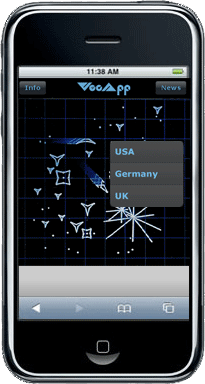 Oliver at vectrexmuseum.com has just released a Vectrex Locator web-app for mobile phones, for tracking up-to-the-moment, international, on-the-go Vectrex sales and news.
Oliver at vectrexmuseum.com has just released a Vectrex Locator web-app for mobile phones, for tracking up-to-the-moment, international, on-the-go Vectrex sales and news.
The Vectrex is close to Atari Asteroids’ heart: it was a vector screen home game system released in 1982, with a spaceship-shooting-things game (Mine Storm) Â installed on every unit. Â While they were only in stores for a year or two, they have an avid following to this day, and can often be found on sites like eBay.
The VecApp is a web app, in that it resides on a server and is accessed via the internet. Â It’s specially designed for mobile devices, and with a data connection, appears to function as any native app would.
VecApp features include:
- Displays Vectrex collectibles on different eBay markets
- Currency converter (updated several times on trade days)
- Internal clock including seconds (using your device´s time configuration)
- Actual Vectrex News (updates when loading the web-app)
- Answers the question “What the hack is a Vectrex?”
- Hidden Easter Egg
To install it, open www.vectrexmuseum.com/mobile/ with your mobile device, then tap “Add to Bookmarks†for easy, one-tap access.
For more information, visit vextrexmuseum’s VecApp site:Â http://vectrexmuseum.com/mobile/vecapp.php
Read our review of the Vectrex here.
